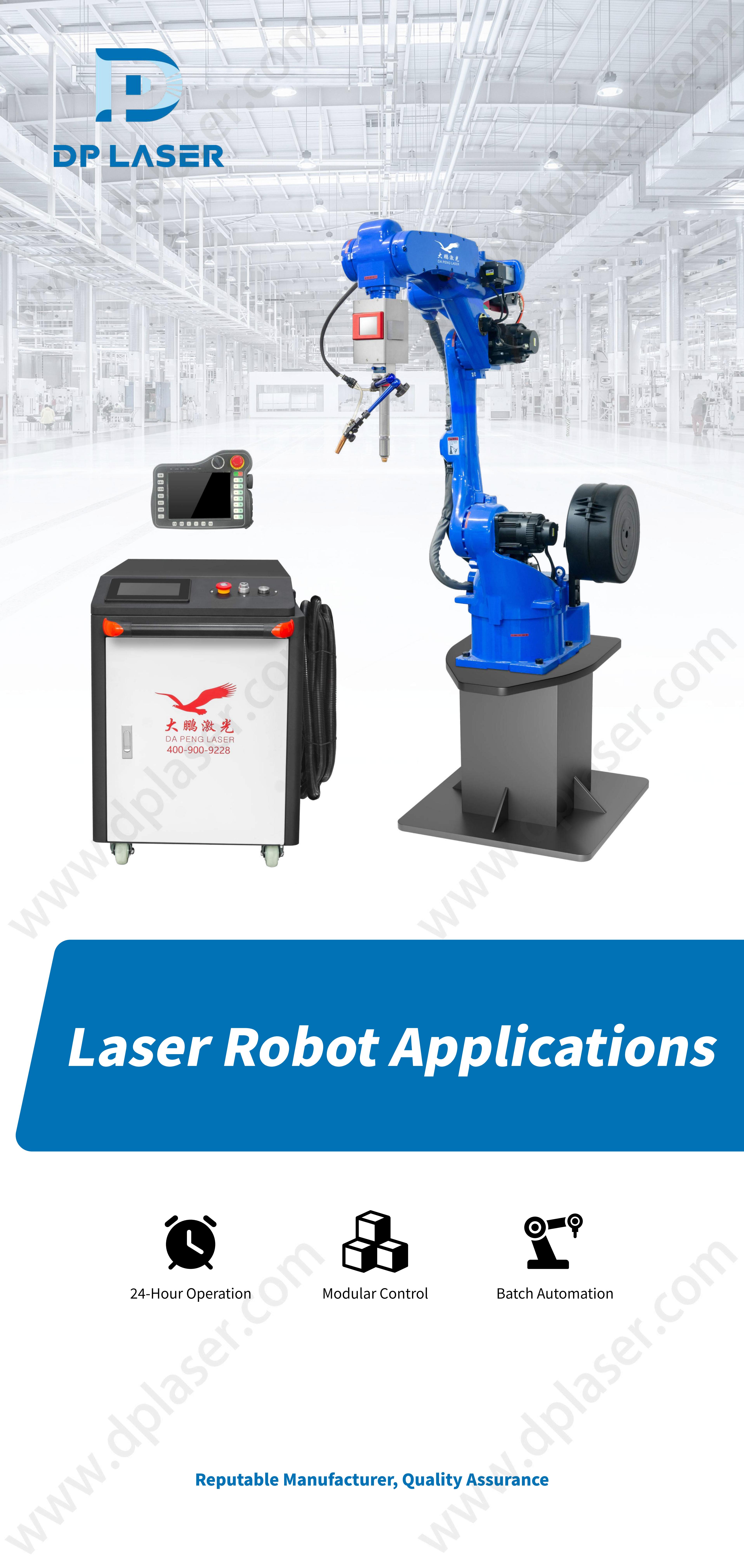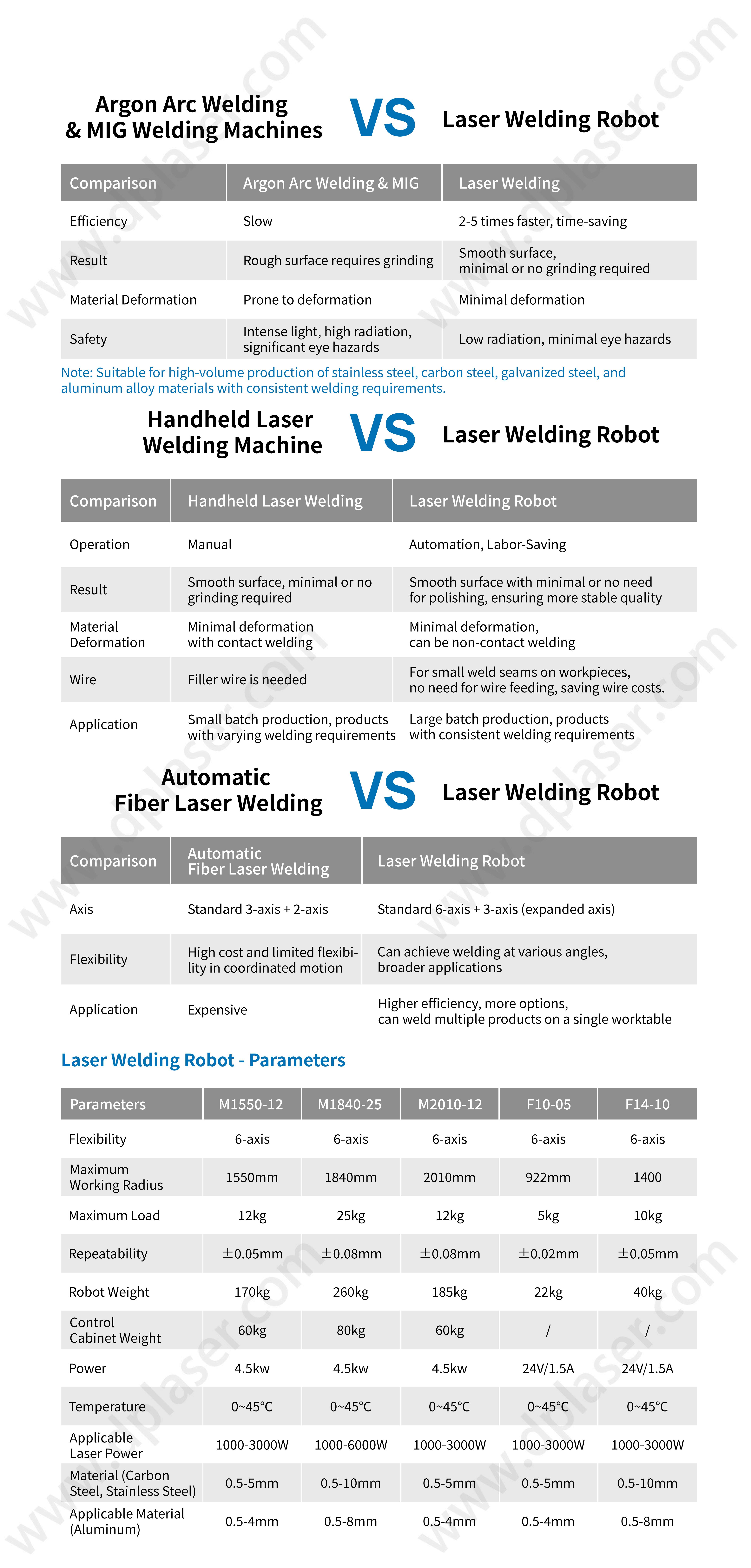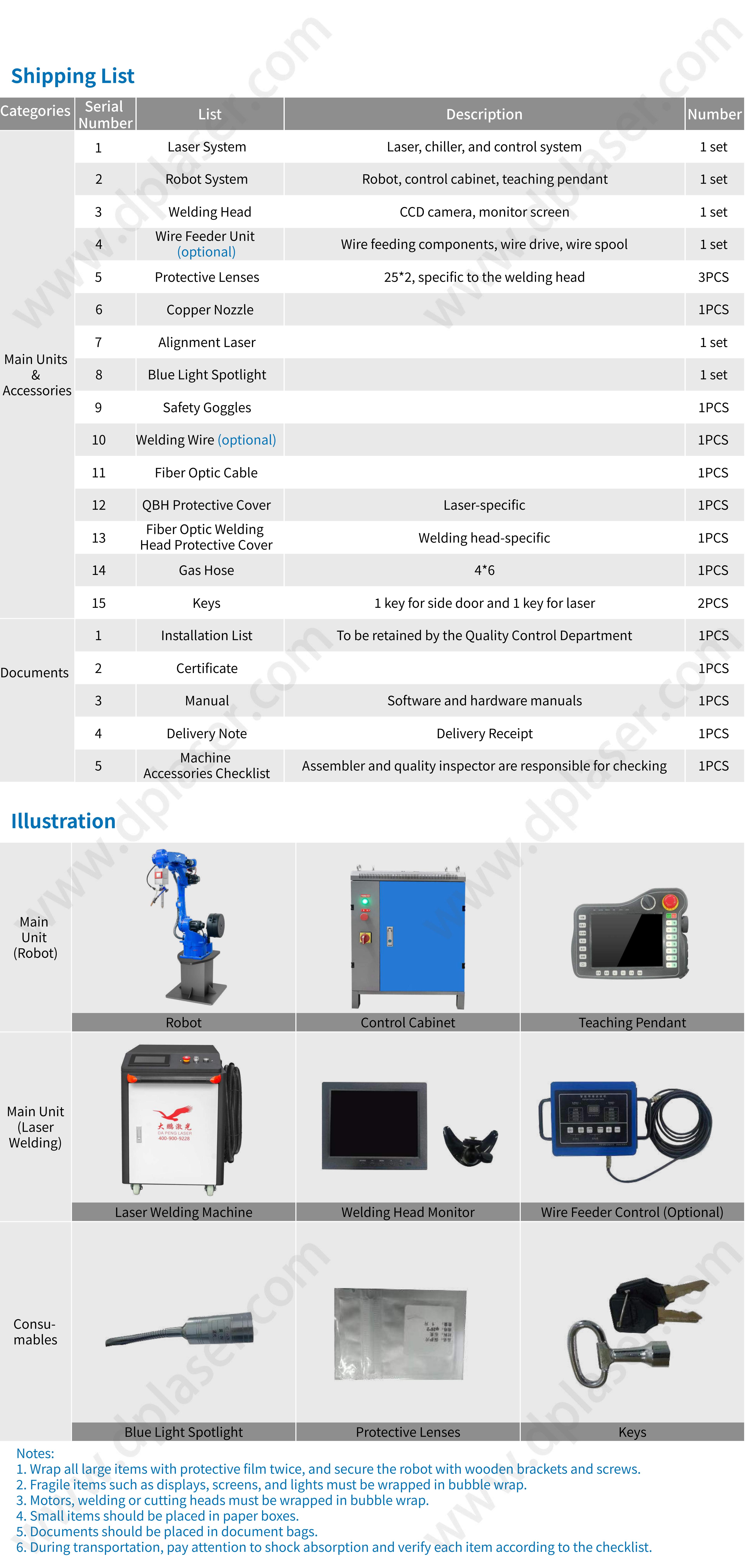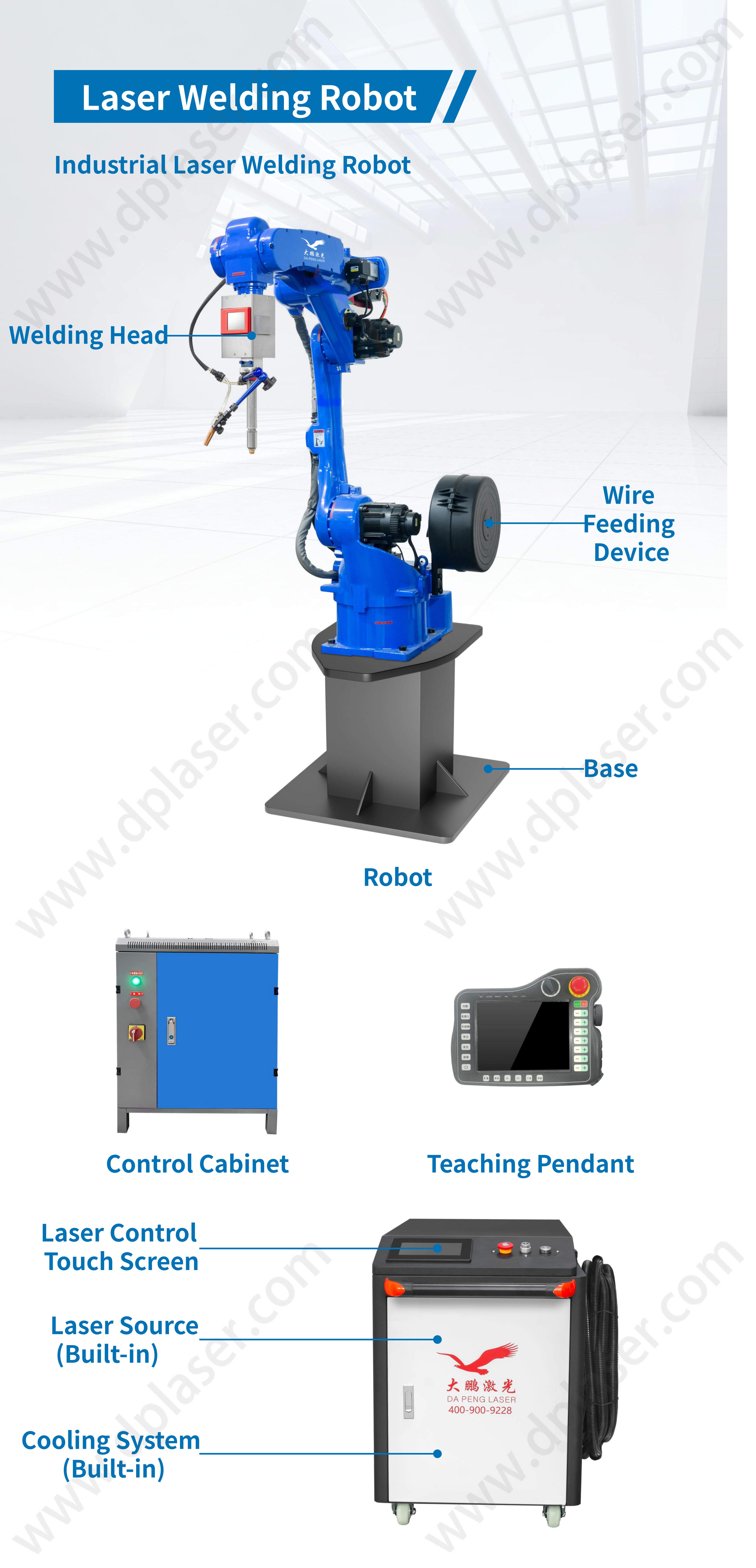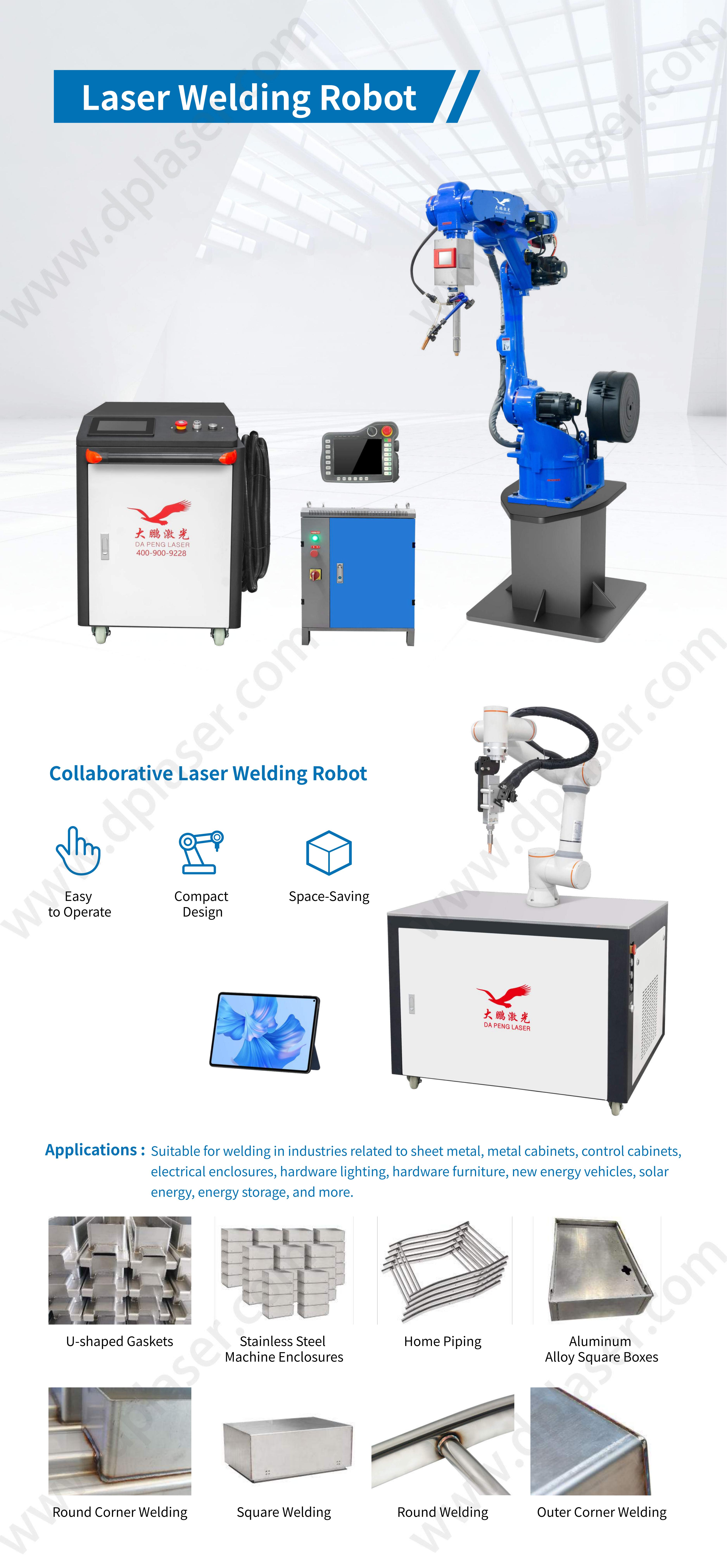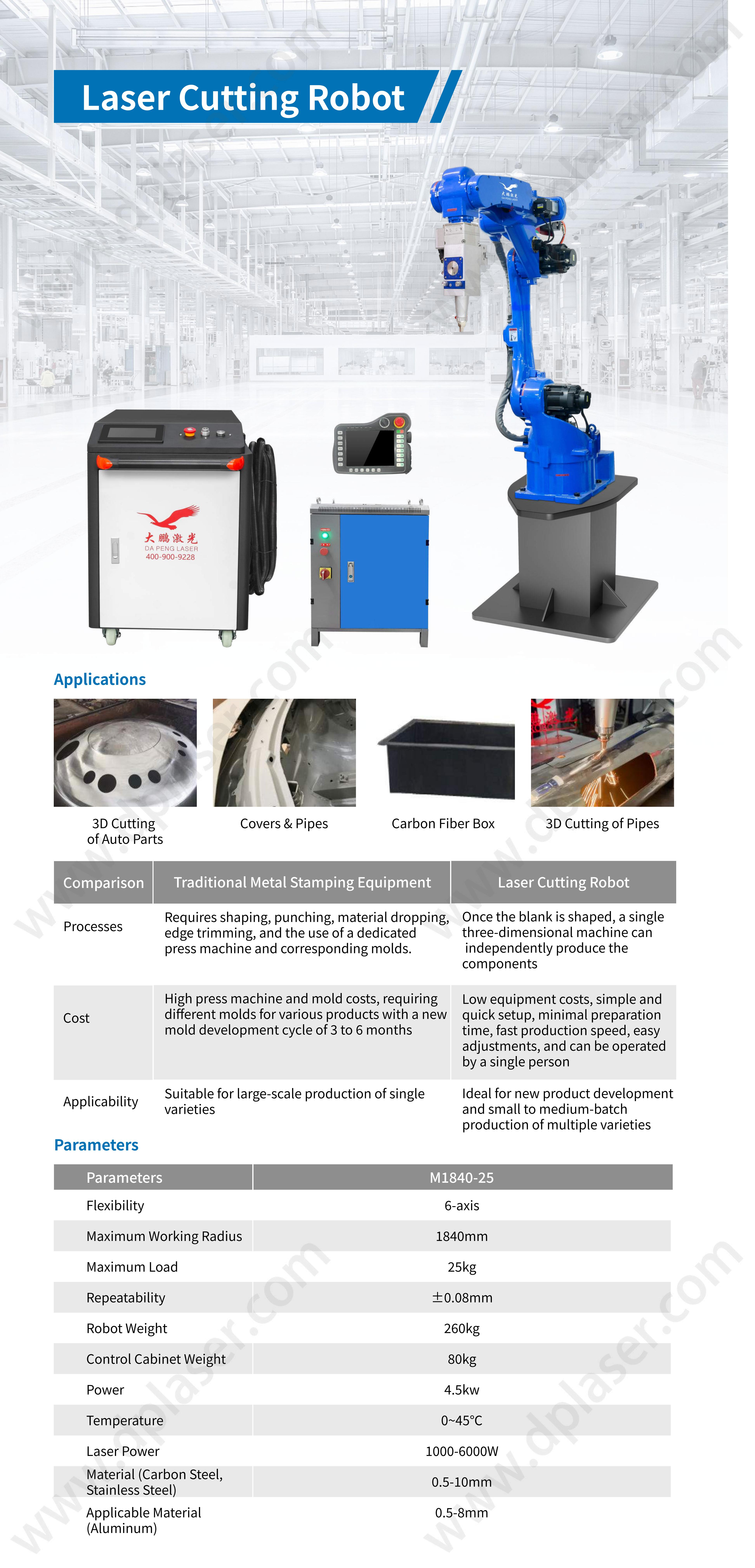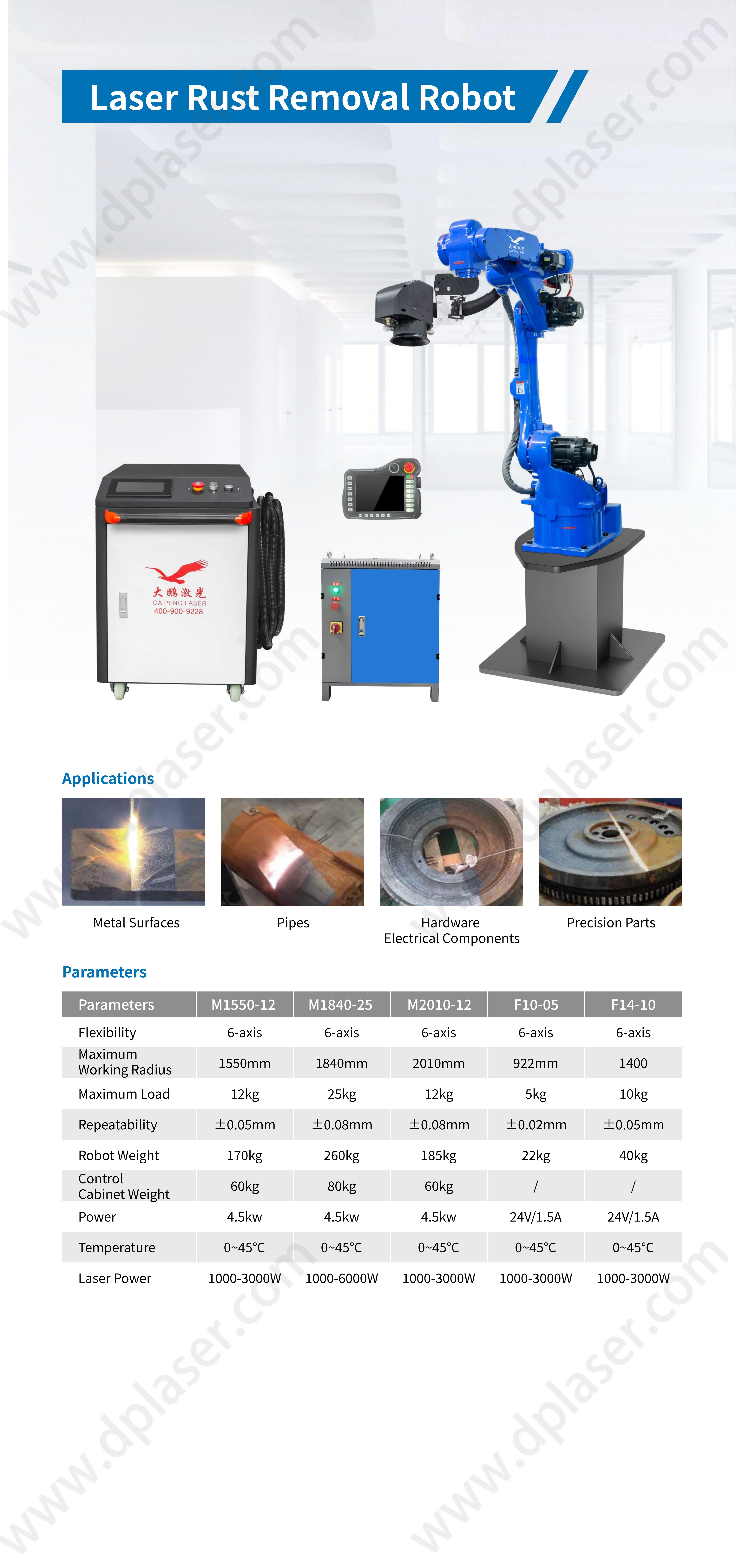Robot laser welding machine is an automated welding equipment that uses laser technology for welding. Compared to traditional welding methods, robot laser welding machine has higher precision and efficiency.
- High Precision: Achieves accurate welds and high-quality finished products.
- Faster Welding Speed: The concentrated laser beam allows for more efficientwelding compared to traditional methods.
- Versatility: Can handle a wide range of materials and thicknesses, includingaluminum, stainless steel, and plastics.
- Automated Programming: Welding tasks can be programmed to performmultiple operations automatically.
- Large Work Envelope: Able to handle large components and complex weldingtasks.
6-Axis Double Station Robotic Fiber Laser Welding Machine
The six-axis laser welding robot is the most typical robot. It is mainly composed of joints and connecting arm. The robot arm and wrist cooperate to complete the target trajectory movement, with 6 degrees of freedom in space.
Six-axis robots offer a great mix of speed, reach, payload capacity, and reach. These robots can cover the vast majority of laser welding applications. They excel in small to medium-sized welding tasks. Their excellent range of motion helps them weld complex part geometries.
-
Wide application
With an effective working radius of 1450mm, it can be applied to most welding needs and has high cost performance.
-
High precision and large load
It is more suitable for high precision and heavy load working occasions.
-
High speed and stability
The structure of each joint has been optimized, the running speed is fast, and complete every step of instructions accurately.
Advantages of 6 Axis Double Station Laser Welding Robot:
- Intelligence and Flexibility: The robot is equipped with an intelligent control system, and its six-axis design allows it to weld in any space without being restricted to a specific plane, thus improving flexibility and applicability.
- Customised fixtures: Customers can customise fixtures according to actual production requirements to ensure that the workpiece is securely fixed during the welding process, improving productivity and welding quality.
- Dual-station or station welding: The robot can achieve dual-station or station welding operations, saving time for product installation of fixtures and significantly improving production efficiency.
- Advanced Oscillating Welding Head: Adopting advanced oscillating welding head, its unique wedge-shaped vibration mode makes the weld seam wider and expands the applicable range of laser welding, which can deal with larger-sized workpieces.
- Efficient and precise laser welding: For workpieces with wider weld seams, the robot is able to achieve efficient and precise laser welding, with better weld seam quality and a smoother, more aesthetically pleasing surface, thus enhancing the quality and appearance of the product.
- High Repeatability and Low Running Costs: Robots have high repeatability to ensure welding accuracy and consistency, and at the same time, they require no consumables, are flexible in manufacturing, and have low running costs.
- Replacement of manual operation: In some difficult welding spaces, robots can replace manual operation, improving safety and productivity while reducing human resource costs.
